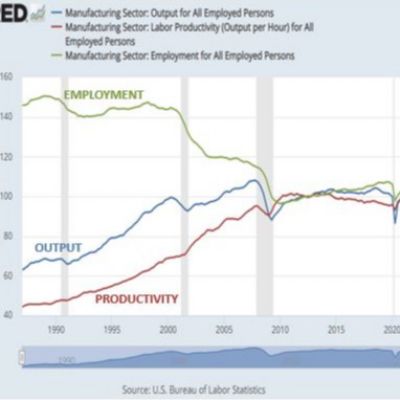No Crystal Ball? Then Strategic Planning It Is!
February 24, 2025Comments
Why should manufacturers conduct regular, in-depth strategic-planning exercises? Doing so makes common sense, yet relatively few companies take the time to conduct such planning.
David Luther, a digital content strategist at Oracle NetSuite, has written an excellent blog post on the subject. He begins:
“If your company had a crystal ball that could reveal the market twists and turns that lie ahead, along with evolving customer needs and the internal changes that your organization should make to succeed, you wouldn’t need strategic planning. But alas, for real-world business managers, strategic planning must stand in for magical foresight.
“Strategic planning breaks down a long-term vision into actionable steps,” he adds, “giving all team members a common understanding of the organization’s shared objectives.”
To add perspective, consider that a whopping 95% of employees say that they don’t understand their company’s strategy, according to a Harvard Business School survey. Other surveys reveal that companies that have written business plans grow 30% faster than those that don’t, and 71% of companies described as “fast growing” have strategic plans in place.
We here at PMA have embarked on such a journey, which you can learn about in my interview with the incoming PMA board chair for 2025: Gene Lambert, VP of sales at metal former Batesville Tool & Die. The goal of PMA’s strategic plan, Lambert says: Develop a process to better serve its members and provide the services that are important to them. Step one of several over the coming years is to fine-tune the new-member experience, beginning with onboarding.
Lambert understands well the strategic-planning process, as BTD management long has recognized its importance—in the absence of the “magical foresight” referred to by Luther. “Components and assemblies are more complex today, representative of our advanced manufacturing technology,” explains Lambert.
To accommodate such evolution, the firm has committed to making substantial annual investments in automation—enhancements that help BTD cope with volume reductions in the automotive marketplace, among other twists and turns. Historically a supplier working nearly entirely in the automotive supply chain, BTD has made recent inroads into other markets.
“We conduct semiannual strategy sessions,” Lambert explains, “following up on all of our previously discussed strategy objectives as well as discussing any new sales opportunities that our team has been working on. And, every 2 weeks our executive team meets for an exercise we call ‘opportunity tracking.’”
During these sales-driven planning meetings, the BTD team discusses new projects and potential customers in the pipeline. “Bringing on any new customer often starts with an investment on our part, perhaps in equipment, engineering support or simulation analysis,” Lambert shares. “We want to ensure that the members of our executive team work closely with each other, and all agree that any new customer or project strategically makes sense.”








